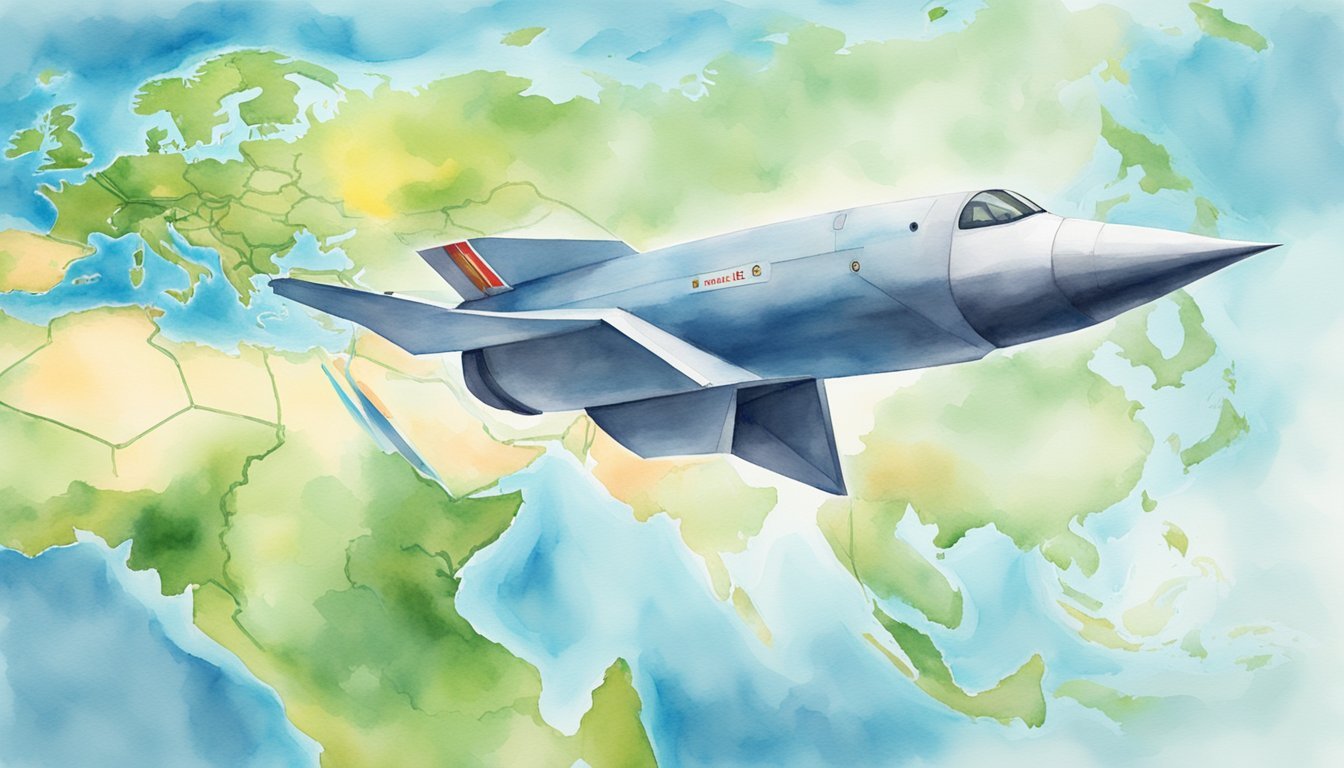Overview of China’s Hypersonic Missile Capabilities
China’s hypersonic missile program has made significant strides, posing new dynamics in global defense and strategic balance. The development of these missiles represents a critical shift in modern warfare, placing importance on speed and maneuverability.
Evolution and Advancements
The evolution of China’s hypersonic weapons program is evident through the progression of their technologies and capabilities. One of the more notable advancements is the introduction of missiles like the DF-17, which experts believe can reach speeds above Mach 5, five times the speed of sound. A key feature of these hypersonic missiles is the utilization of scramjet technology, which compresses air before combustion to enable sustained high-speed flight within the atmosphere, differentiating them from traditional ballistic missiles that briefly travel through space. Additionally, China has been exploring various propulsion and guidance systems to enhance the maneuverability and precision of these weapons, making them more challenging to intercept. Some analysts speculate that advancements in related aerospace technologies, such as the solar impulse aircraft, could indirectly contribute to innovations in hypersonic flight by improving energy efficiency and lightweight materials. As these developments continue, China’s hypersonic program is likely to play a significant role in shaping future military and defense strategies worldwide.
China has reportedly tested several hypersonic missiles, with the latest being the DF-27, believed to be capable of sidelining US carrier groups in the Pacific. Moreover, China’s development of such weapons is indicative of their focus on countering missile defense systems through significantly increased speed and agility.
Comparison with Global Hypersonic Technologies
Globally, hypersonic missiles signify a paradigm shift in military technology. China is positioned as a leader in hypersonic advancements, with the United States and Russia also actively developing these weapons. The US, for instance, is developing the Hypersonic Air-breathing Weapon Concept (HAWC), which is similar in principle to those of China, with a scramjet engine designed for sustained high speeds.
The comparison with global hypersonic technologies shows that while the US and Russia are significant players, China’s missile tests and apparent operational capabilities, like those able to strike US forces in Guam and beyond, underscore its advancement in this domain. These developments have spurred an arms race to create missiles that can strike anywhere on the globe with unprecedented velocity, revolutionizing the battlefield and posing strategic challenges for geopolitical rivals.
Strategic Implications and Global Response

With the emergence of hypersonic missiles, such as China’s DF-27, the landscape of global security and defense strategies is rapidly evolving. These advanced weapons systems present unique challenges to existing defense mechanisms and stir international relations.
Defense Challenges Posed by Hypersonic Missiles
Hypersonic missiles travel at speeds exceeding Mach 5, coupled with high maneuverability, making them difficult to detect and intercept with present U.S. missile defenses. The Pentagon has been actively assessing the risk these weapons pose to national security, considering their capacity to carry both conventional and nuclear-capable warheads. For example, their high speed significantly shortens the response time that the United States and other nations have to engage their defense systems, challenging the protection of strategic assets such as U.S. aircraft carriers.
Experts such as Jeffrey Lewis from the Middlebury Institute of International Studies at Monterey have highlighted the need for new intelligence and surveillance technologies to detect launches and track these fast-moving targets, enhancing early warning capabilities.
International Relations and Security Concerns
The advancement and deployment of hypersonic missiles by China, mirrored by similar efforts in Russia, fuel growing tensions in international security. These weapons have the potential to destabilize the existing nuclear deterrence balance and could lead to a new arms race.
As articulated by James Acton of the Carnegie Endowment for International Peace, the development of these systems by various countries raises critical issues regarding arms control agreements and global stability. Nations like the United States are prompted to negotiate with their counterparts to address mutual concerns regarding these disruptive technologies.
U.S. officials are also working on diplomatic fronts to manage the escalation of these threats, maintaining a balance between exhibiting strength and engaging in strategic dialogues to ensure collective security. The global response is not only a testament to the disruptive nature of hypersonic technology but also a sobering reminder of the fine line between defense advancements and international peace.

